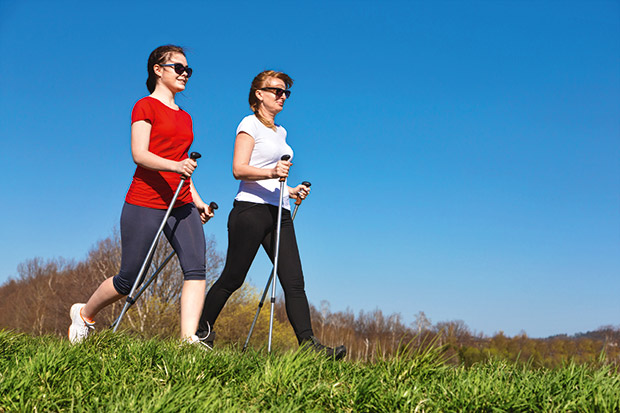Gait speed is a simple yet powerful measure of an individual’s mobility and functional capacity. It is the time it takes for someone to walk a given distance, typically 4 meters (13 feet). This seemingly basic test has been shown to have significant clinical implications, particularly in older adults. In this article, we will explore what gait speed is, how it is measured, and its importance in assessing mobility and predicting health outcomes.
What is Gait Speed?

As mentioned, gait speed is the time it takes for an individual to walk a specific distance. It is a common test used in both clinical and research settings to assess an individual’s mobility. The most commonly used distance for measuring gait speed is 4 meters, but it can also be measured over longer distances, such as 10 meters or 20 meters.
The test involves walking at a normal pace, without running or jogging, and can be performed with or without a walking aid. Gait speed can be measured in various settings, including a doctor’s office, clinic, or even in the community. It is a quick and easy test that provides valuable information about an individual’s overall mobility.
Factors Affecting Gait Speed
Several factors can influence an individual’s gait speed, including:
- Age: Gait speed tends to decrease with age. As we get older, our muscles may weaken, and joint pain may develop, making it more challenging to walk quickly.
- Gender: Women tend to have slower gait speeds than men. This difference may be due to differences in muscle mass and strength between genders.
- Body mass index (BMI): Individuals with higher BMIs tend to have slower gait speeds. Excess weight can put additional strain on the joints and muscles, making it harder to walk quickly.
- Muscle strength: Stronger muscles are essential for maintaining a faster gait speed. Weak muscles, particularly in the legs, can significantly impact an individual’s ability to walk quickly.
- Joint pain: Joint pain, especially in the hips, knees, and ankles, can make it difficult to walk at a fast pace.
- Neurological disorders: Certain neurological conditions, such as Parkinson’s disease and multiple sclerosis, can affect gait speed. These conditions can cause muscle weakness, tremors, and balance issues, all of which can impact an individual’s walking speed.
How is Gait Speed Measured?

Gait speed can be measured using a stopwatch or timer, with the individual walking 4 meters (13 feet) at a normal pace. The time it takes to complete the walk is recorded, and this is then divided by the distance to calculate the gait speed in meters per second (m/s). For example, if it takes someone 6 seconds to walk 4 meters, their gait speed would be 0.67 m/s.
Another way to measure gait speed is by using wearable sensors, such as accelerometers or gyroscopes. These devices can provide more detailed information about an individual’s gait, including step length, cadence, and stride variability. They can also be used to monitor changes in gait speed over time, making them useful tools for tracking mobility in older adults and individuals with mobility impairments.
Interpreting Gait Speed Results
The average gait speed for healthy adults is around 1.2-1.4 m/s. However, this can vary depending on age, gender, and other factors mentioned earlier. A gait speed of less than 1.0 m/s is considered slow and may indicate potential mobility issues. A gait speed of less than 0.6 m/s is considered very slow and may indicate a higher risk of falls and other adverse health outcomes.
The Importance of Gait Speed in Assessing Mobility
Gait speed is a crucial measure in assessing an individual’s mobility and functional capacity. It provides valuable information about an individual’s overall health and can be used to identify potential issues that may impact their ability to walk and move around.
Predicting Health Outcomes
Several studies have shown that gait speed is a strong predictor of mortality, disability, and institutionalization in older adults. A systematic review and meta-analysis published in the Journal of Geriatric Physical Therapy found that slower gait speed was associated with a higher risk of mortality in community-dwelling older adults. Another study published in the Journal of the American Medical Association (JAMA) found that gait speed was a better predictor of mortality than age, sex, or chronic conditions.
In addition to mortality, gait speed has also been linked to other adverse health outcomes, such as disability and institutionalization. A study published in the Journal of the American Geriatrics Society found that slower gait speed was associated with an increased risk of developing disability in activities of daily living (ADLs) and instrumental activities of daily living (IADLs). Another study published in JAMA found that gait speed was a significant predictor of institutionalization in older adults.
Monitoring Disease Progression
Gait speed can also be used to monitor disease progression in individuals with neurological disorders, such as Parkinson’s disease and multiple sclerosis. These conditions can affect an individual’s gait and lead to changes in gait speed over time. By regularly measuring gait speed, healthcare professionals can track disease progression and make necessary adjustments to treatment plans.
Identifying Fall Risk
Slower gait speed has also been linked to an increased risk of falls in older adults. A study published in the Journal of the American Geriatrics Society found that individuals with slower gait speeds were more likely to experience falls compared to those with faster gait speeds. This is because gait speed is not only a measure of how quickly someone can walk, but it also reflects an individual’s balance, coordination, and muscle strength, all of which are essential for preventing falls.
Gait speed is a simple yet powerful measure of an individual’s mobility and functional capacity. It is influenced by various factors, including age, gender, BMI, muscle strength, joint pain, and neurological disorders. Gait speed can be measured using a simple test or wearable sensors and provides valuable information about an individual’s overall health. It has been shown to be a strong predictor of mortality, disability, institutionalization, and fall risk in older adults. Regularly monitoring gait speed can help healthcare professionals identify potential issues and make necessary interventions to improve an individual’s mobility and quality of life.


